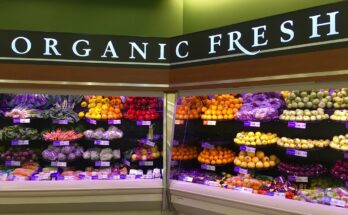Are you tired of spending hours in the kitchen preparing meals from scratch? Thankfully, food processing has revolutionized the way we eat, making ready-to-eat meals more accessible than ever before.
In this article, we will explore the role of food processing in creating these convenient and time-saving options. Over the years, food processing techniques have evolved to meet the demands of our fast-paced lifestyles. From canning and freezing to dehydrating and fermenting, various preservation methods have been developed to extend the shelf life of ingredients and ensure the safety of ready-to-eat meals.
But convenience is not the only factor to consider when it comes to these meals. We will also delve into the nutritional considerations of ready-to-eat options, as well as the innovations in food processing that help retain the essential nutrients while enhancing the taste and texture of the meals.
So, whether you’re a busy professional, a student on-the-go, or simply looking for hassle-free meal options, join us as we uncover the fascinating world of food processing and its role in creating delicious and nutritious ready-to-eat meals.
The Evolution of Food Processing Techniques
You wouldn’t believe how food processing techniques have evolved over time! In the past, people relied on simple methods like drying, smoking, and salting to preserve food. But as technology advanced, so did our ability to process food.
Canning, a revolutionary technique, allowed us to seal food in airtight containers, extending its shelf life. Then came freezing, which opened up a whole new world of possibilities for preserving and storing food. Nowadays, we have even more advanced methods like dehydration, pasteurization, and sterilization. These techniques not only preserve food, but also enhance its flavor, texture, and nutritional value.
Thanks to food processing, we can enjoy a wide variety of ready-to-eat meals that are convenient, safe, and delicious.
Preservation Methods in Food Processing
Explore the various methods used to preserve food during the processing stage, ensuring its freshness and extending its shelf life.
One common preservation method is canning, where food is sealed in airtight containers and heated to destroy bacteria and other microorganisms. This method prevents spoilage and allows food to be stored for long periods without refrigeration.
Another method is dehydration, which involves removing moisture from food to inhibit the growth of bacteria and fungi. Dehydrated foods can be rehydrated later and still retain their nutritional value.
Freezing is another popular preservation method, where food is rapidly chilled to very low temperatures to halt the growth of bacteria. This method maintains the texture and flavor of the food while extending its shelf life.
Finally, food can also be preserved through the use of chemical additives such as salt, sugar, and vinegar, which inhibit the growth of spoilage-causing microorganisms.
Convenience and Accessibility of Ready-to-Eat Meals
Convenience and accessibility are key factors when it comes to the popularity of ready-to-eat meals. In today’s fast-paced world, people often find themselves with little time to cook a meal from scratch. That’s where ready-to-eat meals come in. These meals are pre-packaged and require minimal preparation, making them extremely convenient for busy individuals.
Whether it’s a microwaveable dinner or a pre-packaged salad, ready-to-eat meals offer a quick and easy solution for those on the go. Additionally, these meals are readily available in grocery stores, convenience stores, and even online, making them easily accessible to a wide range of consumers.
With the hectic nature of modern life, it’s no wonder that ready-to-eat meals have become a popular choice for those seeking a hassle-free meal option.
Nutritional Considerations in Ready-to-Eat Meals
Make sure to keep an eye out for the nutritional content of ready-to-eat meals to ensure they align with your health goals. When it comes to these convenient meals, it’s important to consider the nutritional value they provide.
While they may be quick and easy, some ready-to-eat options can be high in sodium, added sugars, and unhealthy fats. Take a look at the ingredient list and the nutrition facts panel to get a better understanding of what you’re consuming.
Look for meals that are balanced in macronutrients like protein, carbohydrates, and healthy fats. Additionally, consider the micronutrients like vitamins and minerals that are essential for overall health.
By being mindful of the nutritional aspects, you can make informed choices and prioritize your well-being even when you’re opting for ready-to-eat meals.
Innovations in Food Processing for Ready-to-Eat Meals
Check out the exciting new ways food is being transformed to create delicious and easy-to-enjoy ready-to-eat options. Innovations in food processing have revolutionized the production of ready-to-eat meals.
Manufacturers are constantly exploring new techniques to improve the taste, texture, and nutritional value of these convenient meals. One such innovation is high-pressure processing (HPP), which uses intense pressure to kill bacteria and extend the shelf life of the food without the need for preservatives. This technology also helps to retain the natural flavors and nutrients of the ingredients.

Another breakthrough is the use of sous vide cooking, where vacuum-sealed food is cooked at a precise temperature to preserve its moisture and tenderness. This method ensures consistent quality and enhances the flavors.
These innovations in food processing have made it possible to create ready-to-eat meals that are not only convenient but also taste great and retain their nutritional value.
Conclusion
In conclusion, you can see that food processing plays a crucial role in creating ready-to-eat meals. It has evolved over time, using various preservation methods to ensure convenience and accessibility.
While there are nutritional considerations to keep in mind, innovations in food processing have allowed for the development of healthier options.
So next time you enjoy a ready-to-eat meal, remember the role food processing plays in making it possible. Enjoy your meal!




